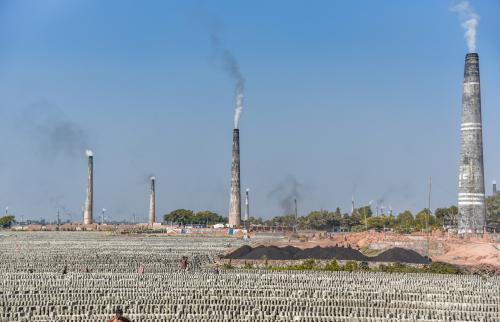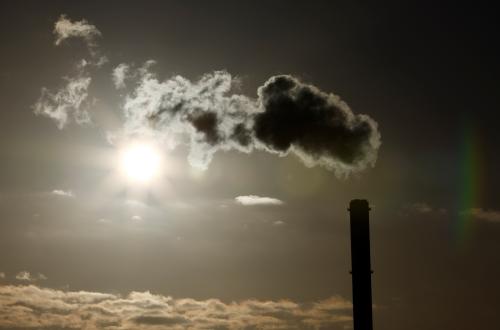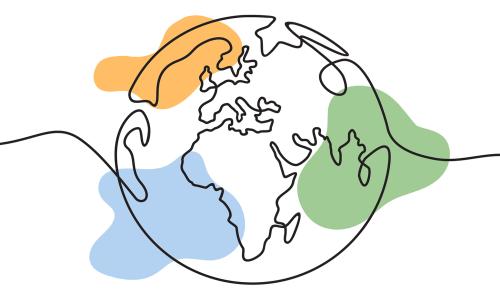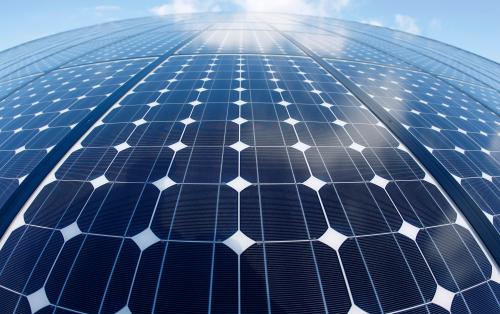As the curtain rises on the second week of diplomatic negotiations at the COP28 climate conference in Dubai, fears of failure are ever-present. Every climate conference operates under this fear, but this year’s gathering faces risks that are higher than usual. That’s because a lingering dispute with developing countries about the money they deserve as compensation has been unresolved for so long that many developing countries are questioning the value of staying engaged.
“Failure” at U.N. conferences can take many forms, but the most damaging is failure to reach formal agreement on the route ahead at the end of the conference. Every big climate conference ends with a big consensus statement about what was agreed to. And because decisions are made by consensus, the progress is often slow and grinding — with seemingly endless debates over the placement of commas or the choice of phrasing such as “phasing out” or “phasing down” the use of fossil fuels. Grinding the process may be, but it usually results in a tired success reached as the clock on the two-week event winds down.
Diplomatic failures happen: the Copenhagen ghost
The last time a major climate conference ended in failure was in 2009 at Copenhagen. On the formal agenda was agreeing on a plan to replace the Kyoto Protocol. Developing countries were wary, and a pledge (organized by the United States) to give them at least $100 billion per year of new funding by the year 2020 helped sway many of them. But a small group dug in — complaining in part about funding and in part about not being let into key negotiations — and refused consent. Copenhagen ended in diplomatic failure, and climate diplomacy’s legitimacy suffered badly.
Today, the ghost of Copenhagen looms large over COP28.
Once again, the fears are about money. The $100 billion in new annual funding pledged in Copenhagen was not delivered on time. (The year, perhaps, is the first time the $100 billion in new funding will be reached, several years after the 2020 deadline offered in Copenhagen.) On top of that, the least developed countries have begun to understand, rightly, that their biggest concerns about climate change are the physical impacts of a changing climate. Even though a lot of progress is being made on controlling emissions globally, that progress is too little and too late to avoid the new reality: the world is in for a lot of climate change.
Inadequate solutions for the wrong problems
To date, most funding offered to developing countries has been targeted to help them control emissions. But this new realization that climate change is already happening — and the world is in for a lot of warming — demands more support to help make societies more resilient to those effects. As a general rule, vulnerability to the impacts of climate change isn’t just a matter of geography (e.g., living close to sea level) but wealth and the competence of local institutions. Some societies, like the Netherlands, which is perennially at risk of flooding, live on the edge of climatic peril but actually do well because they mobilize the capital and skills to make themselves safer. Poorer countries can’t do this without outside help, and the case for offering that help is strengthened by the fact that most climate change is caused by wealthy countries’ emissions.
The solution to this problem, forged at last year’s climate conference (which was held in Egypt) was a special fund to help these countries address the “loss and damage” caused by climate change. The Egypt conference ended with diplomatic success in part because a special fund was set up, although the fund was little more than a bank account — empty of resources. (Pledges made over the last couple of weeks will, if honored, put a pittance into the fund. The fundamental problems remain.) In the year since, fears that developing countries won’t get much help for “loss and damage” have simmered. The fact that this year’s climate conference is being held in an oil-rich country — with one of the world’s largest sovereign wealth funds, filled with the revenues from selling oil and gas — has brought this simmer to a boil.
So, what can be done?
Whose funding, and for what?
One answer to that question is that the real concerns of the least developed countries need to be heard. The United Arab Emirates has helped organize a new funding mechanism, filled with at least $25 billion, that will help pay the cost of controlling emissions in developing countries. While that funding mechanism is welcome — because scaling this kind of funding is key to financing deep cuts in emissions — the offer doesn’t respond to what the least developed countries really want. First and foremost, they want help with loss and damage. The UAE’s funding offer is also contingent upon the funds going to commercially viable projects, but the least developed countries are least developing in part because they are not places where many investments are commercially viable.
More work will be needed in the coming week to align these different interests. As this happens, it will be important to focus not just on the amount of money allocated for “loss and damage” but also on how those funds will be spent. The Green Climate Fund is an example of a dedicated fund created by climate diplomats that lacked a coherent strategy for investing its funds. It has largely failed.
Focusing on the most vulnerable countries’ fundamental national interests is also important because it will help us reach the right diagnosis if failure happens at COP28. In fact, there’s already a lot of talk about failure at COP28, but for different reasons — and not the right reasons. COP28 is being hosted by a petrostate that also put the boss of its state oil company in charge of the conference. Certainly, that has led to some awkward moments and a lot of criticism, but it also has a lot of merit. In a petrostate, the most competent institutions are typically state energy companies. Moreover, if all the focus on oil and gas puts more pressure on the whole oil and gas industry — not just in the United Arab Emirates — to deliver more action, that’s probably good news. (That pressure has already led to bolder new commitments announced last week to slash methane emissions from the industry — actions that are long overdue.) But all that criticism around the role of oil and gas has eclipsed, a bit, the much deeper and more durable political divisions over the most vulnerable countries’ growing dissatisfaction regarding whether this process will yield tangible benefits for them. That problem will persist, whether or not climate conferences are held in the United Arab Emirates.
The necessity of a Plan B
It’s also important to brace for failure and have a Plan B at the ready. At Copenhagen, failure came as a surprise. Fortuitously, the failure was a useful shock to the system. Climate diplomacy had drifted into a rut and was on a track that could not be effective. The failure opened up space for new ideas, including proposals that later framed the Paris Agreement — a framework that is working.
COP28 is different. Here, failure would be harmful. One plan that the UAE should ready is a “friends of loss and damage” — a group of countries (perhaps also firms) that stands ready to create funding mechanisms that will turn the promise of funding into a reality, even in the absence of formally agreed diplomatic direction.
Every climate conference is, in practice, two events. One is the formal diplomatic event. The other is a series of side events where companies make pledges and others hold meetings that showcase the importance of climate action. In recent years, the side events have become more important and an area where lots of progress occurs. But diplomacy remains important, and the consensus agreements that emerge give legitimacy to the entire process. COP28 will be a big test of that logic.






Commentary
COP28 and the ghosts of Copenhagen
December 7, 2023